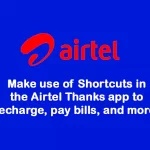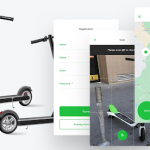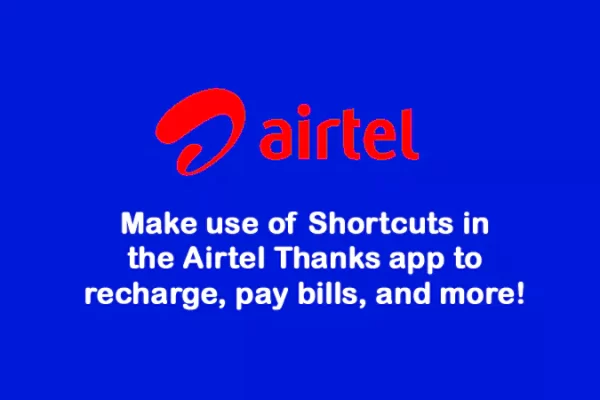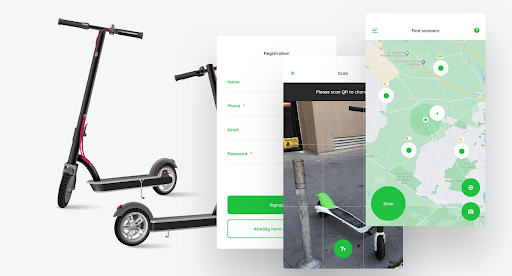If you are a mobile app owner you might have heard of the various frameworks available in the market to create mobile applications. These frameworks are the base or the skeleton of the entire mobile app development procedure.
Choosing the right mobile application framework is quite a tedious task. One of the recent frameworks that are gaining a lot of popularity and being used by renowned technical organizations is Flutter.
Flutter is an open-source mobile UI framework or software development kit designed to create mobile applications. Flutter is based on the dart framework and has a layered architecture. The three major layers of the Flutter framework include-
- Embedder
- C++ Engine
- Dart Framework
Flutter allows the developers to work with a single codebase along with the requirement of minimal coding. This means that you can use the same code for different platforms and operating systems.
If the developer team insists on creating the application using the Flutter framework the mobile app owners need to consider the Flutter Pros & Cons before moving ahead.
Apps developed using flutter-
Google Ads, Alibaba, Birch Finance, Reflectly, Cryptograph
In this blog, we will give you an overview of the Flutter Pros & Cons-
Table of Contents
Pros of Flutter
UI/UX
Flutter-based mobile applications ensure a rich user experience which is one of the major goals of mobile app owners. Since users want the app to be user-friendly and function smoothly in different network conditions, mobile app owners could find using flutter beneficial.
Apart from this, the framework of flutter is enriched with multiple versatile components, API access, a vast set of libraries, a unique material design, and scrolling features.
All these elements allow rendering the User Interface across cross-platforms like iOS and Android.
Mobile app owners can make the most out of these features, as mobile apps with a brilliant UI and UX are the first choice of customers. A good UX/UI also makes the app more successful and improves the brand value.
Hot Reload
A user-friendly app is a result of all the work done by developers. Whether it’s front-end or back-end, mobile app owners need to hire developers that can make the most out of the technologies and programming languages.
Flutter eases the work of developers so that they can create mobile applications that can stand out from the rest. It is done by a feature named “Hot Reload”.
A common issue faced by developers is the time that gets consumed in screen updates whenever an update or change is made in the code. Once a developer has updated the code, it takes a lot of time for that change to appear on the screen.
This raises a need for the “Hot Reload” feature to render a change in sub-seconds. When rendering, updates are made at a faster pace as it saves the time developer.
Thus mobile app owners can introduce multiple apps and acquire more clients in a lesser amount of time. Also, Hot-reload not only saves time but also reduces the cost spent on the development of mobile apps.
Single Codebase
When mobile applications are developed, it requires the mobile app owners to hire a huge team of expert developers to reach the desired result.
But not every owner has the budget or exposure to reach out and hire a team of such experienced developers. Some applications also require developers to program the same application in different languages.
This makes the development process a bit difficult for both the mobile app owners as well as the developers.
Flutter gives an advantage to the owners and developers as it uses a “Single-Codebase”, for multiple platforms. It means that the developer can use the same code for mobile apps developed for iOS, Android, and other operating systems.
This single-codebase also ensures that the app functions just like native apps. Whereas the benefit offered is the optimization of Flutter App development cost which ultimately also saves a lot of time of the mobile app owners and developers.
Dart Framework
The architecture of flutter consists of various layers and one of these layers is known as Dart Framework. The framework has the most important features of flutter that includes a wide variety of widgets, reusable classes, animation, painting, and gestures.
The widget layer and libraries (Cupertino and Material) are the most helpful components for the developers to program at a fast pace with the most necessary tools.
Programming Language
Since the programming language is one of the important aspects for developing any mobile application, mobile app owners need to consider this point before hiring developers.
If flutter is used in the development process, the developers that a mobile app owner needs to hire must be well-versed with the dart programming language. One of the easiest coding languages to learn, developers can easily work on it.
This helps the mobile app owners to hire such programmers and even if they do not know the dart language, the developers can be made to learn it easily.
Additionally, dart language uses minimal coding as compared to other SDKs. The two main components of Dart are JIT and AOT that are responsible for improved app performance.
Documentation
Google, an organization that owns Flutter is well-known for its extremely high standard documentation.
Developers can easily learn and gain knowledge on flutter app development via the content available in the form of documents, video lessons, practical exercises, and other resources.
Flutter’s team has already researched the developers’ expertise before launching it in the market. This is the reason why even a developer with minimal coding experience finds it easy to work on Flutter and create out-of-box mobile applications.
Apart from the content made available by Google to learn Flutter, there is growing community support for this new SDK.
Also, if you are a mobile app owner you can make your developer team join online courses on Udemy and Udacity or make them join study groups on platforms like Slack.
Cons of Flutter
Stand-alone mobile application
One of the major drawbacks of Flutter is that it does not support website browsers. This disadvantage of the framework limits offering its services only to mobile-based applications.
The mobile applications, if required to be developed for web browsers like Android browsers, need to opt for different design strategies because of this limitation.
Also, the Flutter framework is not designed in a way that it can support and offer maximum device flexibility.
Lack of third-party libraries
Flutter does offer libraries and widgets, but these components are not sufficient enough for developers to come up with the best mobile solutions.
Since Flutter is new in the market, it still needs to develop a strong set of libraries and cover all the dimensions of mobile app development services.
This leads to making the developers create libraries by themselves resulting in lots of tedious tasks and more time-consuming.
Google support is also not up to the developer’s expectations when it comes to choosing the Flutter framework.
Lack of proper support and libraries makes Flutter framework a tough choice for both the developers and mobile owners.
Difficult to work
Although features like Hot-Reload reduce the amount of time needed to update the changes on the screen, operating the Flutter framework becomes difficult at times.
The apps built using Flutter are user-friendly but the interface of Flutter itself is not that simple and easy to work upon.
Navigation options, drop-down menus, moving back and forth are some elements where Flutter needs to improve the functionality.
Large File Size
One of the concerns of mobile app owners is that their app needs to reach out to as many customers in their target group.
Apart from marketing and promotion, for apps to be installed in a user’s mobile phone one aspect that matters the most is “Size of the mobile application.”
In a competitive world of mobile applications where users prefer apps that don’t require a lot of storage space, Flutter-based apps are lagging behind.
Apps built using Flutter have comparatively large file sizes. Now, most of the time users’ mobile phones do not have a large amount of memory or storage.
So while installing Flutter-based apps, they might be asked to delete other applications or data to make enough space for the app to be installed.
Conclusion
We have given you an overview of the pros and cons of the flutter framework. Choosing the right framework needs a lot of research about all the technicalities of that particular framework.
Since Flutter has more advantages and most importantly it saves time and the cost required for the development procedure, you can easily opt for it.
Also, there are currently many business giants that are using applications developed by flutter. You can review them and compare their functioning with the other applications.
Above all, you need to take into consideration what the end-user will experience when a mobile application is built using the Flutter framework.
Keep all these aspects in mind before opting for Flutter. We hope now you can decide whether to choose flutter or not.
For more technology-related information, please read out our other blogs that will help you gain knowledge on the mobile app development procedure.











